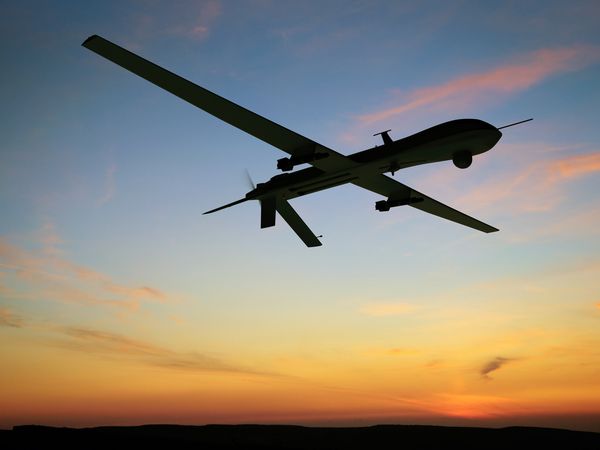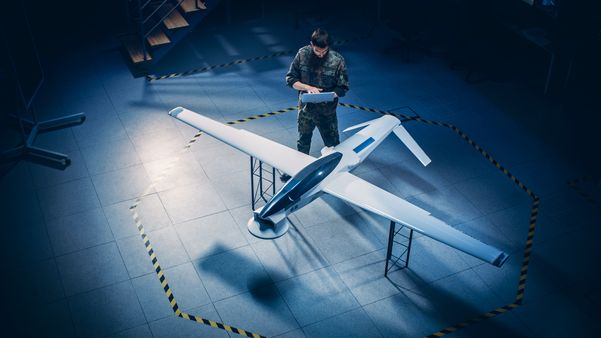The Air Force, after more than a year of deliberation, has finally decided to add propeller-powered light attack aircraft to its arsenal. That's good news for plane maker Textron (TXT 0.69%) and a rival offering from Embraer (ERJ 0.36%) and Sierra Nevada. Alas, at least for now, the order won't be big enough to move the needle for the companies involved.
The Air Force on Oct. 24 released final requests for proposal for a "limited number" of Textron AT-6 and Sierra/Embraer A-29 aircraft, with the service saying it initially plans to purchase "two or three" planes from each manufacturer to support "allied and partner capacity, capability and interoperability via training, and experimentation."
The announcement should breathe new life into the two development programs, with the Textron airplane in particular in need of an order, and it may also come as a disappointment. Congressional lawmakers in recent years have expressed an interest in building a fleet of upwards of 300 of the planes at a cost of about $20 million apiece, creating a hope for a big payday.

TEXTRON'S AT-6 WOLVERINE LIGHT ATTACK AIRCRAFT. IMAGE SOURCE: TEXTRON.
Not all hope is lost. Air Force Secretary Barbara Barrett in a statement announcing the order said the service would continue to explore uses for the plane.
"Over the last two years, I watched as the Air Force experimented with light attack aircraft to discover alternate, cost-effective options to deliver airpower and build partner capacity around the globe," Barrett said. "I look forward to this next phase."
Old-school air power
It might seem odd that in the age of trillion-dollar warplanes the Air Force would remain intrigued by propeller aircraft, but there is a use case for planes, with slower speeds, better fuel economy, and tight maneuverability that can hover over battlefields and provide close-in support for troops. The U.S. counted the propeller-powered A-1E Skyraider as a mainstay as recently as the Vietnam War.
The Skyraider did have a higher-than-average loss rate, a reminder of the downside of slow speeds and low-altitude flying. These modern planes would have similar vulnerabilities, and their share of critics inside the Pentagon for that reason. But there is a case to be made for deploying these aircrafts in battle situations where the firepower of the F-35 or F-22 is overkill -- for example, fighting insurgents and terrorists who lack modern anti-aircraft weapons.
A light attack aircraft could be used as a low-cost way to augment the U.S. fleet of A-10 Warthogs, an aging military mainstay that the Pentagon has been paying to upgrade because there are at this time no obvious replacements.
About the planes
Textron's AT-6 Wolverine is a modernized version of the Beechcraft T-6 Texan that sold more than 800 units in the U.S. and among allies, used primarily as a Navy trainer in the United States. It's a plane the Air Force is familiar with, and the original design has thousands of hours of flight time to prove its reliability and a reputation for durability.
Typically, in platform development contractors will wait for an award from the Pentagon to help fund R&D and other start-up costs, but Textron has taken on the challenge of developing the Wolverine internally in hopes of finding an audience. The updated version has advanced armor and automated missile detection and countermeasure systems designed to increase survivability.
The Air Force intends to deploy the Wolverines it buys to Air Combat Command at Nellis Air Force Base in Nevada for continued testing and development of operational tactics and standards. That in turn should eventually make the plane more attractive for export to international partners.

Sierra Nevada and Embraer's A-29 Super Tucano. Image source: Sierra Nevada.
The A-29 is much more battle tested, having been deployed against drug smugglers for Brazil and against the Revolutionary Armed Forces of Colombia. The plane has also been involved in airstrike sorties for Afghanistan. Its international sales mean it has a ready-made ecosystem of accessories built around it, and the plane has also had some precision U.S.-made weaponry, including laser-guided bombs, integrated to work on it.
The A-29s to be purchased will be located at Hurlburt Field in Florida.
Live to fight another day
Textron is a company in need of a kick-start, and while the company is more than just a defense stock, its small but growing military business seems the most likely part of the company to provide a spark. Textron has a number of promising helicopters, weapons, and drones involved in competitions, and it almost certainly isn't counting on the Wolverine to come to the rescue. But this win, small as it is, if nothing else keeps Textron's foothold in the military aviation market.
TXT vs. S&P 500 data by YCharts
The Pentagon's total spending on light attack aircraft might end up being more of a rounding error than a significant sum, but this small initial order helps validates Textron's investment to develop the Wolverine. And it should make it easier for the company to eventually win international orders.
Air Force Chief of Staff Gen. David Goldfein, in the statement announcing the order, said the planes can be vital to the military's effort to work with foreign partners.
"Our focus is on how a light attack aircraft can help our allies and partners as they confront violent extremism and conduct operations within their borders," Goldfein said. "Continuing this experiment, using the authorities Congress has provided, gives us the opportunity to put a small number of aircraft through the paces and work with partner nations on ways in which smaller, affordable aircraft like these can support their air forces."
The Wolverine probably won't turn out to be a blockbuster. But the plane's prospects look a lot rosier now than they did just a month ago.








